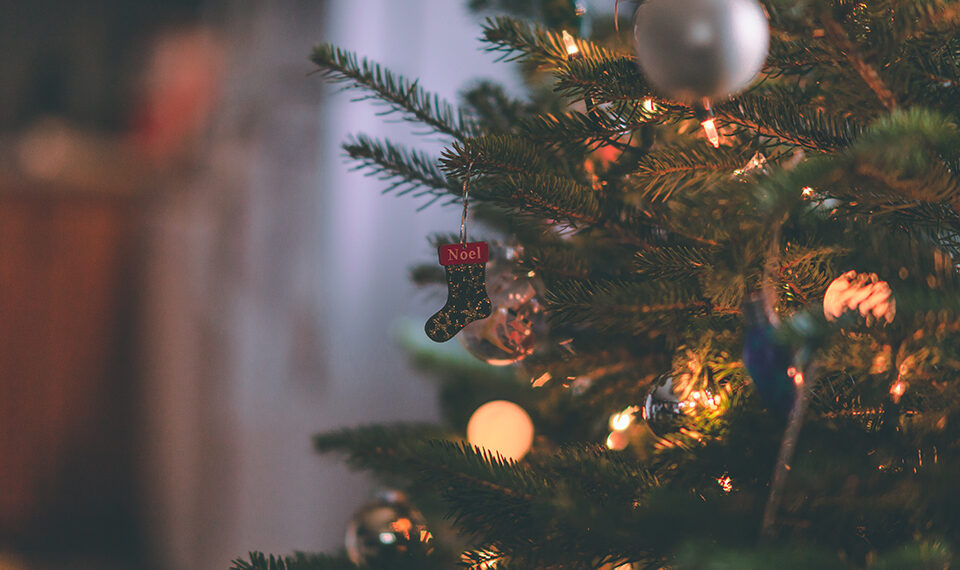Oh Christmas tree: Christmas just isn’t the same without a festively decorated tree! But did you know that these fir trees are real climate sinners? So that we can celebrate Christmas with a clear conscience, we present eight sustainable alternatives.
Unfortunately, our beloved Christmas tree is not as green as it looks: The fir tree grows in so-called monocultures. By always growing the same type of plant, the nutrients in the soil are only used one-sidedly. This in turn means that monocultures are more susceptible to pests. To protect our Christmas tree, pesticides, chemical pesticides, are used, which is quite harmful for the environment and the grower!
The Tannenbaum scores a further minus point in the CO2 emissions category. Although Switzerland loves the Nordmann fir as a Christmas tree, it has to travel a long way before it can finally be found in our cozy living room. This is because the dark green giant originally comes from Georgia, Russia or north-eastern Turkey. After a long journey, it does not stay with its buyer for more than three weeks on average. So after a short time it becomes a disposable product, and all the CO2 emissions were for nothing!
But so that we can spend the Christmas season with as much charity as possible, we now present eight ways to avoid climate change!
1. the tree from the region
Why does a tree have to travel so much? Let’s let the conifers relax a little and choose one that comes from the surrounding area. Silver fir, Norway spruce and spruce, for example, are widespread in Switzerland and therefore the perfect choice! It is therefore advisable to buy from forestry companies – this also supports local businesses, a clear win-win situation!
Here you can find places that offer regional Christmas trees!
2. the fair tree
A fair Christmas tree brings us double the joy! As the fir trees in demand often come from regions where the workers pick the seeds for little pay and under difficult conditions, this is quite a blow to our idea of charity. This is precisely why the Danish organization Fair Trees exists. Even though Fair Trees is limited to Germany so far, their website offers a lot of information about the world of fir trees!
3. the organic tree
To avoid having a Christmas tree contaminated with pesticides in your living room, it is important to look out for the FSC label and the organic bud! These seals indicate that the selected tree really does come from a particularly sustainable farm.
4. the tree in the pot
Why always buy a tree straight away? Renting does the trick too! This gives you a tree with roots in a pot that you can decorate and adore to your heart’s content! The only difference? After the holidays, the brave Christmas tree does not end up in the green waste, but is returned to its owner. It will be lovingly replanted there and can grow peacefully for a year until you come back next December and take it home for the holidays. Zero waste at its best!
Our tip: Give the tree a chance to adapt to the warmer temperatures and water it every two days to ensure it survives the festive season!
You can rent trees here:
ecosapin.ch Simply enter your zip code and a retailer will be suggested who will deliver the tree to you.
traumbaum. ch On request, Traumbaum delivers to locations in Switzerland and Liechtenstein.
schutzfilisur.ch This provider distributes rental trees throughout Switzerland.
ohtannenbaum.ch The pop-up brings trees to your home by e-bike or rickshaw in Zurich and Bern.
5. the branch as a tree
It doesn’t always have to be a whole tree: a branch is enough! A large fir branch can be just as beautiful as a whole tree, and the fir can continue to grow. A great alternative to still bring the scent of Christmas into your home!
6. the artistic tree
It goes without saying that we don’t use plastic trees! Long transportation routes, poor working conditions and from China: ecological looks different! We much prefer to opt for wooden and metal alternatives that reinterpret the Christmas tree. We can find these in online stores or in furniture stores.
7. the DIY tree
If you don’t have enough money or simply can’t find a suitable one, get creative! Use natural materials, such as branches and twigs, to build a unique and individual Christmas tree. This alternative to the Christmas tree is simple, inexpensive and a lot of fun.
8. plant a tree
Why do trees always have to be felled? Let’s plant one and watch it grow! With this alternative, we give something back to nature and take nothing away from it. Because Christmas is about giving and not about receiving!







